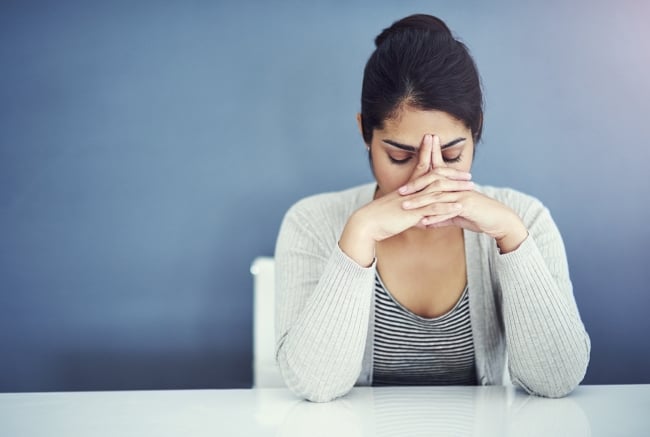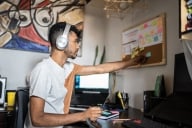You have /5 articles left.
Sign up for a free account or log in.

iStock
For the sixth year in a row, anxiety was the top condition of students seeking care at campus counseling centers in 2014-15, according to a survey by the Association for University and College Counseling Center Directors.
The survey finds that students seeking treatment at centers are relatively consistent in the conditions they are reporting, but that stability means that many students continue to face potentially debilitating conditions.
The annual survey -- which includes public and private, two-year and four-year institutions -- also provides details on other key issues facing counseling centers. The data, for example, show that many counseling centers are still forced to use waiting lists for treatment in some periods of the year. And the survey also suggests that counseling centers are moving to diversify their professional staffs, which have been criticized by minority students in some campus protests for being too white.
Why Students Seek Help
Many students of course report more than one condition when seeking help from counseling centers, so many students are counted in more than one of the conditions noted in the table below.
| Condition | Average % of Students Reporting Condition When Seeking Help, 2014-15 |
| Anxiety | 47.3% |
| Depression | 40.1% |
| Relationship issues | 32.5% |
| Taking psychotropic medication | 26.1% |
| Suicidal thoughts/behaviors | 20.2% |
| Had extensive/significant prior treatment histories | 14.7% |
| Engaging in self-injury | 12.8% |
| Alcohol abuse/dependence | 10.6% |
| ADD or ADHD | 8.8% |
| Learning disability | 8.8% |
| Issues of oppression (racism, sexism, homophobia, etc.) | 8.7% |
| Sexual/physical assault | 8.3% |
| Substance abuse (other than alcohol) | 7.7% |
| Eating disorders | 7.0% |
| Being stalked | 2.3% |
Relatively few items on the list are significantly up or down from the survey the year before. But one that is up is counseling help related to issues of oppression, such as racism, sexism and homophobia. In 2013-14, only 6.6 percent of students cited that issue, while it was up to 8.7 percent in 2014-15.
Many of the protests by minority students in the last academic year cited, among other issues, what students perceive as a lack of minority professionals in counseling offices. Data from this year's survey suggest that counseling centers are significantly increasing the hiring of minority professionals, compared to historic hiring trends.
Demographics of Counseling Center Clinical Staff
| Group | % of Total Staff | % of New Hires |
| White | 72.2% | 61.9% |
| Black | 10.2% | 12.2% |
| Latino | 6.7% | 7.1% |
| Asian | 7.4% | 11.5% |
| Multiracial | 2.0% | 4.4% |
| Other | 1.0% | 1.7% |
| Native American | 0.5% | 0.1% |
A trend that appears to be increasing, according to the survey, is providing some counseling via telepsychology -- using video chat or other technology to provide services remotely.
A year ago, 6.6 percent of counseling centers reporting using telepsychology in some form. In the new survey, the figure is up to 9.1 percent.
Some campuses noted that they were starting these services as a result of branch campuses or online programs in which students would not have access to the main campus counseling center.
Access to services remains a serious concern for many counseling center directors. Many note that, lacking enough counselors to meet demand, they must use triage systems and put some students on waiting lists before they can receive treatment.
Generally, smaller colleges reported shorter times of years that they had waiting lists for treatment. At colleges with enrollments of 1,501 to 2,500, directors reported an average of eight weeks a year in which waiting lists were used. At colleges with enrollments of 25,001 to 30,000, waiting lists were used an average of 23 weeks a year. At colleges with enrollments greater than 15,000, the average number of students on waiting lists exceeded 50, and it was as high as 70 for institutions with enrollments of 30,001 to 35,000.








